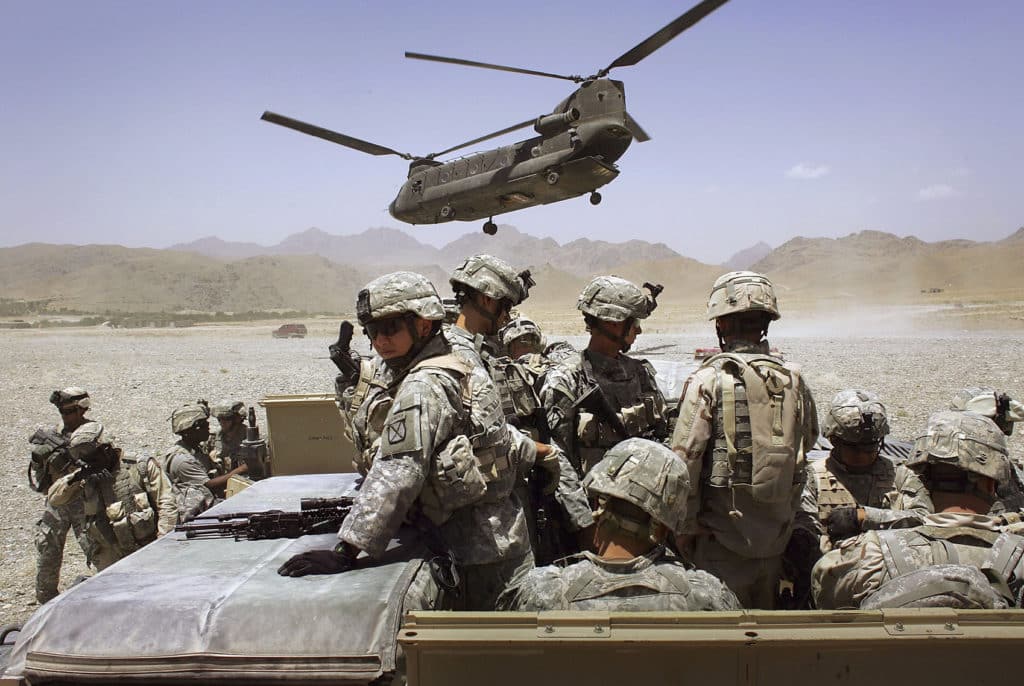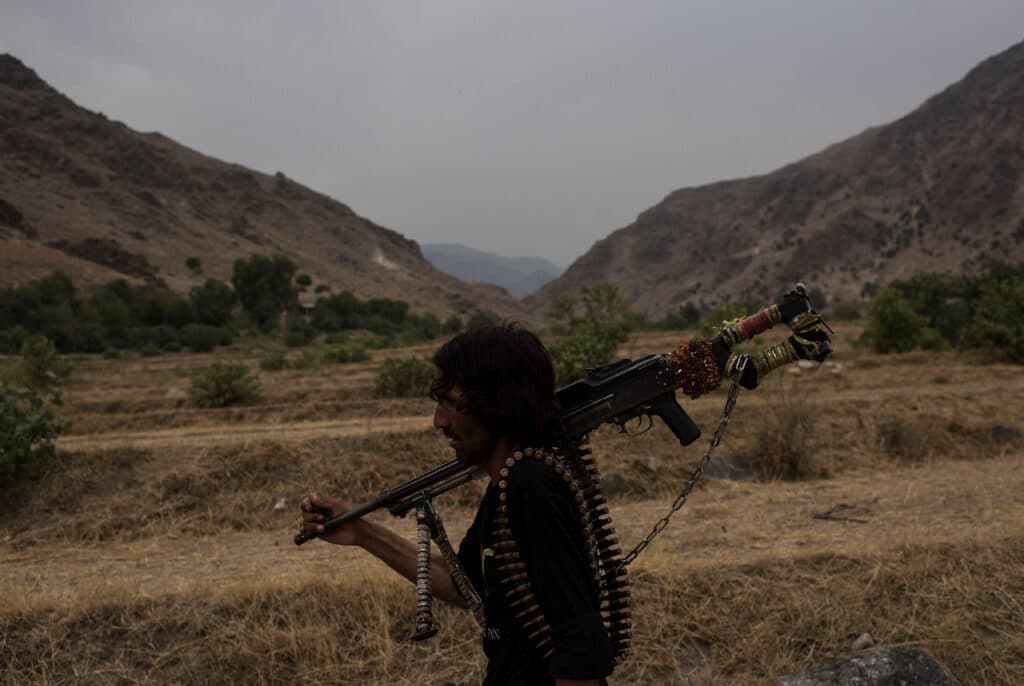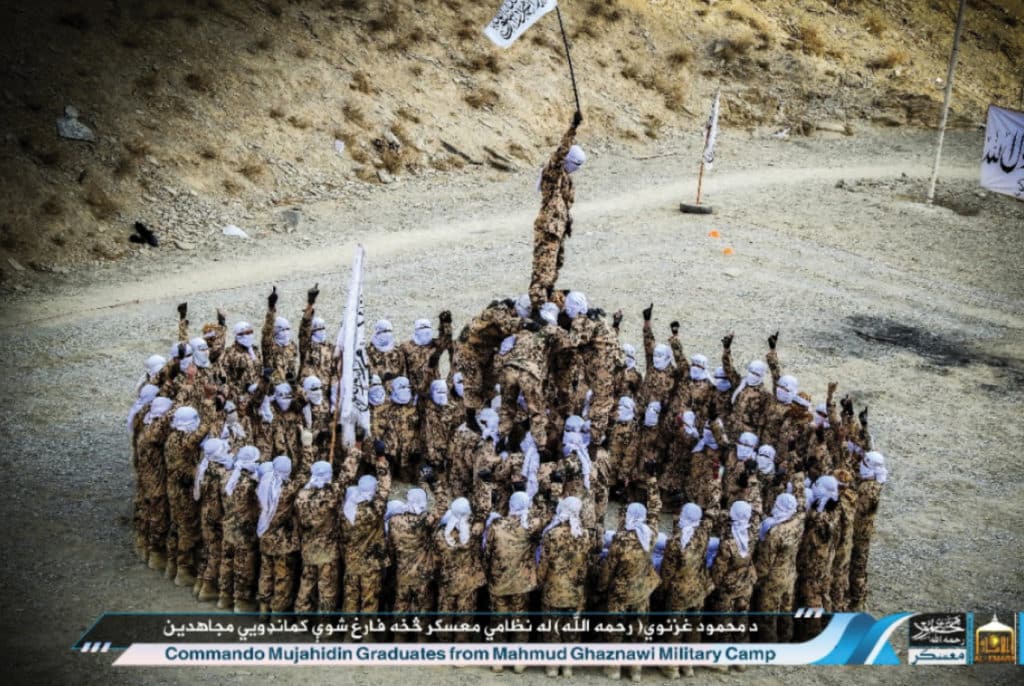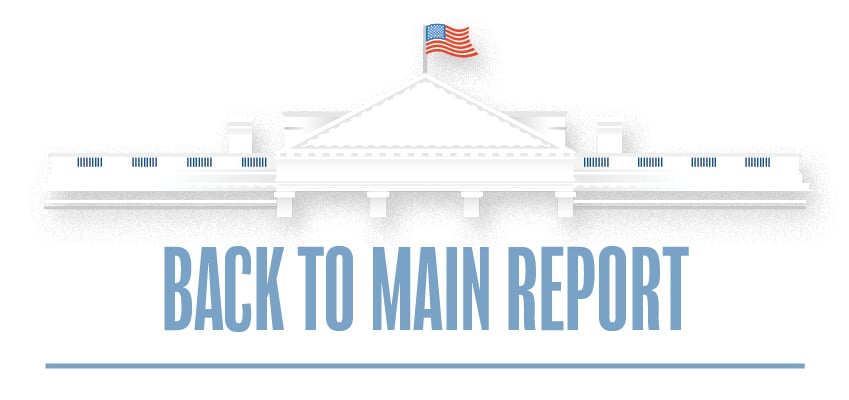January 31, 2019 |
Midterm Assessment: Afghanistan
Contents
January 31, 2019
Midterm Assessment: Afghanistan
Current Policy
On August 21, 2017, President Trump announced his strategy for the war in Afghanistan. After a rancorous debate within the administration, the president finally took a clear position. “My original instinct was to pull out — and, historically, I like following my instincts,” Trump said.1 But somewhat unexpectedly, Trump explained that a “hasty withdrawal” would only allow al-Qaeda and the Islamic State to enjoy safe havens inside Afghanistan, from which they could threaten the U.S. and its allies. Trump approved the deployment of several thousand more American troops, declaring that the “men and women who serve our nation in combat deserve a plan for victory.”
President Trump’s plan had four parts. First, the U.S. would “shift from a time-based approach to one based on conditions.” That is, the U.S. would not set an arbitrary timetable for troop deployments and withdrawal, as President Obama had when announcing his own surge of forces into Afghanistan in December 2009. Obama’s public timetable made it easy for the jihadists to wait the U.S. out, as they knew that the Americans coming to fight them would begin going home in just 18 months.
Second, Trump announced that his strategy would integrate “all instruments of American power — diplomatic, economic, and military — toward a successful outcome.” In that vein, the U.S. would be willing to negotiate with the Taliban, but only “after an effective military effort.” At that point, the president said, “perhaps it will be possible to have a political settlement that includes elements of the Taliban in Afghanistan, but nobody knows if or when that will ever happen.”
Third, Trump argued that the U.S. needed to rebalance its relationships with Pakistan and India, two long-time rivals that have competing interests throughout South Asia. The Trump administration would change its approach to dealing with Pakistan. Citing the “billions and billions of dollars” the U.S. has provided Pakistan, Trump lamented the duplicitous behavior of America’s frenemy. The president harshly criticized Pakistan’s long-running practice of providing safe havens for jihadist groups, especially the Taliban, which targets American forces in Afghanistan. Trump added that America would “further develop its strategic partnership with India.” He wanted India to do more to “help us” with Afghanistan, “especially in the area of economic assistance and development.”
Fourth, and finally, President Trump said Washington would stop micromanaging the troops in the field, allowing “wartime commanders and frontline soldiers” to react in “real time.” The president approved a loosening of the “rules of engagement,” allowing American forces to more frequently target the Taliban, al-Qaeda, and the Islamic State’s Afghan arm, as well as associated criminal networks. The administration intended these changes, in part, to allow the U.S. military to engage the Taliban more frequently than it had under Obama, whose administration came to view the Taliban as an enemy of the Afghan government, but not of the United States.
In sum, the Trump administration’s plan for Afghanistan boiled down to more assistance for the Afghan government, while putting pressure on Pakistan to be more cooperative.

American soldiers from the 10th Mountain Division deploy to fight Taliban fighters as part of Operation Mountain Thrust to a U.S. base near the village of Deh Afghan on June 22, 2006 in the Zabul province of Afghanistan. (Photo by John Moore/Getty Images)
Assessment
More than one year after President Trump’s speech, little is working. No one – including President Trump – speaks of “victory.” Recent reports suggest that the president is looking to withdraw several thousand, and perhaps more, troops from Afghanistan.2 The jihadists are well positioned to capitalize on an American withdrawal. The Taliban contests or controls more ground today than at any point since October 2001. More than 60 percent of Afghanistan’s districts are either up for grabs or under the jihadists’ domain.3

A member of the Afghan Local Police walks past the Momand Valley on July 16, 2017. (Photo by Andrew Renneisen/Getty Images)
Afghan military and security forces are struggling to stop the Taliban from gaining more ground, while suffering a high rate of attrition. The terrorists regularly strike inside Kabul, and both the Taliban and the Islamic State’s Afghan arm are able to attack government and civilian facilities with alarming frequency. According to the UN, civilian casualties in and around Kabul are at, or near, a record high.4
Instead of pursuing victory, the Trump administration is seeking to cajole the Taliban into negotiating a political settlement with the Kabul government. Whereas Trump’s August 2017 speech made success on the battlefield a prerequisite for negotiations, the administration has now dispensed with that requirement.
The pursuit of a negotiated settlement is almost certain to fail because the Taliban will not compromise with a government in Kabul it considers to be an illegitimate Western puppet. In fact, the Taliban’s leaders rejected the October 2018 parliamentary elections on religious grounds. After warning civilians not to vote, the Taliban attacked voting sites throughout the country, killing or wounding hundreds of civilians.
The Obama administration also attempted to negotiate a peace with the Taliban, resulting in a predictable fiasco. The Taliban extracted concessions, giving up nothing of value in return, while further exacerbating tensions between the U.S. and its Afghan allies. The U.S. has even less leverage today, as the number of U.S. troops in country is about 15,000 – far fewer than the 100,000-plus at the peak of Obama’s surge. The current talks run the risk of, once again, legitimizing the Taliban at the expense of America’s Afghan allies. Although the Afghan government remains weak and corrupt, its forces are the chief roadblock to the jihadists’ advances.
With regard to Pakistan, the U.S. followed through on President Trump’s well-placed criticism by withholding tens of millions of dollars in Foreign Military Financing in 2017 and 2018. However, the State Department confirms that Pakistan’s military and intelligence establishment continues to provide sanctuaries for terrorist organizations, including the Afghan Taliban’s leadership. In particular, the Pakistanis remain unwilling to hunt down members of the powerful al-Qaeda-linked Haqqani Network, which is an integral part of the Taliban’s hierarchy. As a result, the Taliban’s chain-of-command remains intact and the group’s decision-makers are under no pressure to make a deal. The last time the U.S. killed a senior Taliban figure in Pakistan was in May 2016, when a drone strike killed the group’s overall leader, Mullah Mansour, just after he returned from Iran.
The rules of engagement for U.S. troops in Afghanistan remain classified, but there is evidence that military personnel now carry out more counterterrorism strikes and directly target the Taliban’s robust narcotics trafficking network. This is an improvement, but the effects are mainly tactical. The U.S. dropped more bombs in Afghanistan in 2018 than in any year in the previous decade.5 This has stopped the Taliban from taking over major cities and destroyed drug facilities that are used to fuel the insurgency. But the Taliban retains its rural strongholds and is poised to pounce on Afghanistan’s cities if and when American troops are withdrawn. Despite suffering a series of leadership and territorial losses in eastern Afghanistan, the Islamic State’s upstart branch has not been defeated either.

Taliban promotes training camp for ‘Commando Mujahidin.’ (FDD’s Long War Journal)
Recommendations
There is no political or popular will in the U.S. to spend the blood and treasure necessary to defeat the Taliban. But the Taliban, which remains closely allied with al-Qaeda, is stronger than at any point since October 2001. Therefore, the U.S. retains a compelling interest in limiting the terrorist threat emanating from South Asia.
- Sanction any Pakistani officials working with the Taliban and its subgroup, the Haqqani Network. In a bid to restrict the Taliban’s financing, the Trump administration has publicly identified and designated as terrorists certain Taliban commanders working with officials in Iran’s Islamic Revolutionary Guard Corps-Quds Force. The administration has also sanctioned members of the Quds Force itself. The Trump administration should apply this same financial pressure to Pakistani officials, who have allowed the Taliban insurgency to thrive. That said, the administration should not overestimate the impact of sanctions in the absence of a more effective strategy.
- Reassess the Taliban and al-Qaeda’s presence in Afghanistan, using captured files and other intelligence. The Obama administration decided that the Taliban was not really America’s enemy and attempted to define al-Qaeda down. These erroneous assessments have stuck, as the U.S. government continues to downplay the extent of the Taliban’s relationship with al-Qaeda, while also erroneously claiming that al-Qaeda has only a de minimus presence in country. However, these assessments are contradicted by a wealth of evidence, including the files recovered in Osama bin Laden’s compound and other recovered al-Qaeda caches, as well as operational data. At a minimum, such a reassessment will be necessary if the U.S. tries to maintain a counterterrorism posture in Afghanistan.
- Continue to target the Taliban’s shadow government as long as the U.S. remains in Afghanistan. The Taliban has built a parallel governance structure throughout much of the country. This is part of the organization’s plan to resurrect its Islamic Emirate in full. The U.S. is already targeting Taliban shadow governors and their deputies, but this campaign could be expanded. Moreover, the U.S. is not targeting those senior Taliban officials headquartered in Pakistan. The Trump administration should look for opportunities to take out the Taliban’s top leadership, which is not willing to cut a peace deal, but is very much planning to rule over Afghanistan once again.
